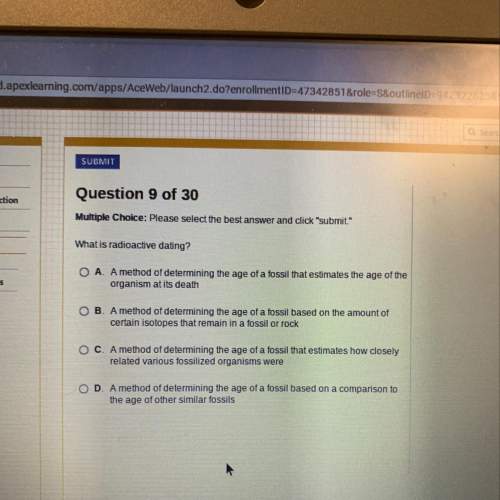
Biology, 29.07.2019 10:20 leahumelinda
Euglena contain chloroplasts. when light is limited, they can eat particles to obtain energy. are these organisms classified as heterotrophs or autotrophs?

Answers: 1
Another question on Biology

Biology, 21.06.2019 20:30
Chinese privet is a plant that is native to china. over 150 years ago, chinese privet was introduced to the united states as a fast-growing shrub that serves as an excellent privacy hedge. with no natural herbivore, chinese privet quickly established itself and spread in natural areas throughout the southeast and eastern seaboard of the united states. its dominance in these areas has jeopardized the survival of native plant species. chinese privet provides evidence that introducing non-native organisms can cause environmental damage integrated pest management strategies will not decrease chinese privet populations american gardeners can easily control the spread of chinese privet non-native plant species have type i survivorship curves
Answers: 3



Biology, 22.06.2019 03:00
To answer this question, researchers studied populations of the dusky salamander (desmognathus ochrophaeus) living on different mountain ranges in the southern appalachian mountains. the researchers tested the reproductive isolation of pairs of salamander populations by leaving one male and one female together and later checking the females for the presence of sperm. four mating combinations were tested for each pair of populations (a and b)—two within the same population (female a with male a and female b with male b) and two between populations (female a with male b and female b with male a). the proportion of successful matings for each mating combination was measured. for example, when all the matings of a particular combination were successful, the researchers gave it a value of 1; when none of the matings were successful, they gave it a value of 0. then the researchers calculated an index of reproductive isolation that ranged from 0 (no isolation) to 2 (full isolation). the reproductive isolation value for two populations is the sum of the proportion of successful matings of each type within populations (aa + bb) minus the sum of the proportion of successful matings of each type between populations (ab + ba). the table provides data for the geographic distances and reproductive isolation values for 27 pairs of dusky salamander populations.
Answers: 1
You know the right answer?
Euglena contain chloroplasts. when light is limited, they can eat particles to obtain energy. are th...
Questions

Mathematics, 07.12.2019 01:31




Physics, 07.12.2019 01:31



Mathematics, 07.12.2019 01:31

Mathematics, 07.12.2019 01:31

History, 07.12.2019 01:31




Mathematics, 07.12.2019 01:31

Mathematics, 07.12.2019 01:31



Mathematics, 07.12.2019 01:31





